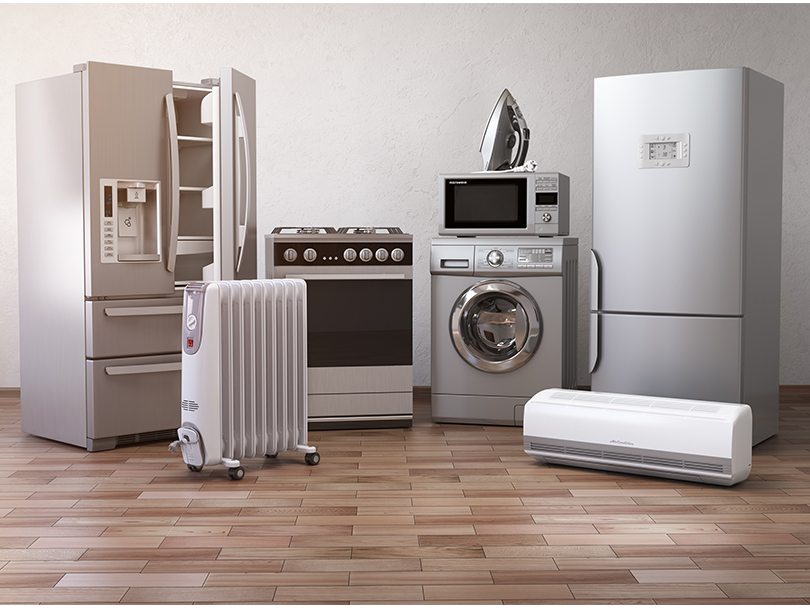By Pat Keegan and Brad Thiessen
If you’re looking at replacing old appliances, it’s smart to consider energy use because most new appliances use much less energy than they did in the past. Manufacturers have found innovative ways to reduce appliance energy use without sacrificing performance. The federal government began tightening appliance standards in the 1980s and has continued as technological innovations became more cost-effective.
It may seem like the oldest appliance should go first. That may make sense if you want the looks and features of a newer oven or dishwasher, but with most appliances the energy savings you get from a new one will take several years to pay for itself with the energy saved.

Replacing an old refrigerator with a newer model is likely your best option for energy savings. Photo Credit: General Electric Appliances
The appliance replacement most likely to produce the greatest energy savings is your refrigerator. An older refrigerator can cost about $20 to run every month. Replacing an old refrigerator with a new ENERGY STAR®-rated model — a label that certifies that the appliance saves energy — can cut that down to less than $5 per month.
New refrigerators will include an additional label, the Energy Guide label, which shows how much energy it uses annually and compares that to the most and least efficient models available. It’s also possible to measure how much energy your refrigerator is using with a kilowatt-hour meter. Energy auditors use these meters to measure energy use for common household appliances. If you’re not ready to replace your older refrigerator, replacing the seal around the door can sometimes reduce its energy use.
When you’re looking to replace an older refrigerator to save energy, style counts. A top-freezer setup is the most efficient, while a lower-freezer unit offers medium savings, and a side-by-side style is the least energy efficient.
If your goal is to save money on your energy bill, resist the urge to keep the old refrigerator in the basement or garage — that won’t help reduce your energy use. An old refrigerator in an uninsulated garage on a hot summer day can use excess energy. If you only need additional freezer space, find the most efficient freezer you can find instead. You can find recommendations on www.energystar.gov.

Upgrading your old dishwasher with an ENERGY STAR®-rated model is another potential area for energy savings. Photo Credit: KitchenAid
If your current refrigerator is in good condition, another appliance you may want to consider upgrading is the dishwasher. With most of us spending more time at home these days, chances are you’re using your dishwasher more than you used to.
As with any major purchase, be sure to read customer reviews for any brands and models you’re considering, and look for additional opportunities to save money, like an upcoming Presidents’ Day appliance sale.
Pat Keegan and Brad Thiessen of Collaborative Efficiency write on energy efficiency topics for the National Rural Electric Cooperative Association, the national trade association representing more than 900 local electric cooperatives. From growing suburbs to remote farming communities, electric co-ops serve as engines of economic development for 42 million Americans across 56% of the nation’s landscape. For additional energy tips and information on Collaborative Efficiency, visit collaborativeefficiency.com/energytips.

